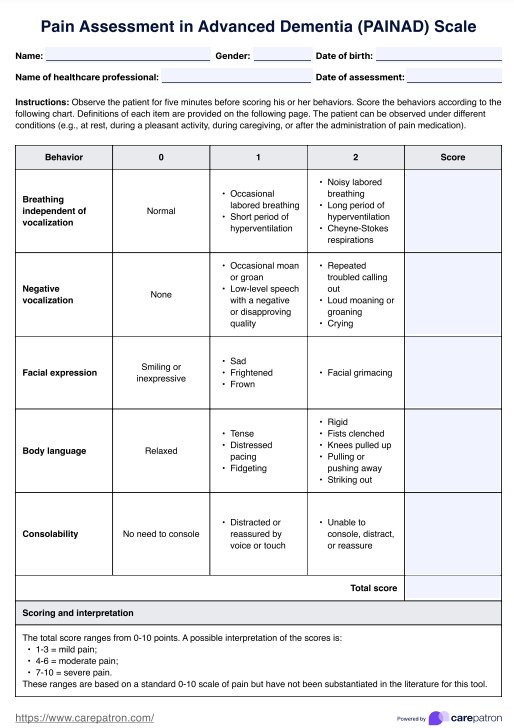Victoria Warden, Ann C. Hurley, and Ladislav Volicer developed the PAINAD Scale to provide healthcare professionals with a tool to assess and monitor pain intensity levels in people with advanced dementia.

PAINAD Scale
Learn about the Pain Assessment in Advanced Dementia Scale (PAINAD) and how to interpret results. Plus, get a free PDF template and example.
PAINAD Scale Template
Commonly asked questions
The PAINAD Scale is scored on a 2-point scale, ranging from 0 to 2. A score of 0 is assigned for behaviors or physical signs that are considered non-painful. Meanwhile, a score of 2 is given for those that indicate severe pain.
The PAINAD Scale is interpreted by assessing the patient's behavior and physical signs. It is important to remember that this is an objective pain assessment. A score of 0 indicates no pain, while a score of 1 or 2 suggests that the patient is experiencing some degree of pain. Depending on the severity of the pain, healthcare providers can adjust their treatment plans accordingly.
EHR and practice management software
Get started for free
*No credit card required
Free
$0/usd
Unlimited clients
Telehealth
1GB of storage
Client portal text
Automated billing and online payments











